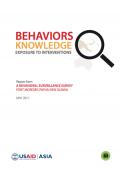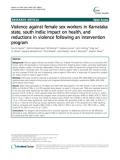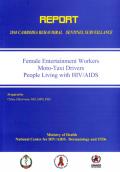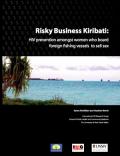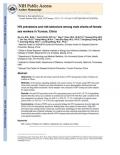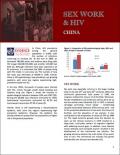Publications on Female Sex Workers (FSW)

Resource | Presentations,
Behavioral sentinel surveillance (BSS) has been conducted by NCHADS to document behavior changes among sentinel groups since 1997. The objectives of the BSS 2010 are:
- To document HIV related risk behaviors among selected sentinel groups
- To track trends in risk behaviors among most at risk groups
- To explore common practices toward the use of VCT, STI clinics and other health services
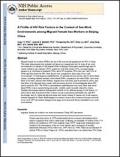
Resource | Publications,
This study demonstrates how multiple risk factors are situated and vary by types of sex work environments in a sample of 348 migrant FSWs in Beijing. Participants reported high rates of clients' refusal to use condoms (76%), unsafe sex with both clients (32%), non-paid regular partners (e.g., boyfriend or husband) (76%), and a STI symptom (79%) last year.
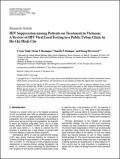
Resource | Publications,
The goals of this study were to document ART efforts in a resource-limited setting with high prevalence of IDUs, to identify high-risk groups for failure who may benefit from more frequent monitoring or other interventions and to assess the potential for delayed diagnosis of treatment failure when using targeted testing based on clinical and immunologic criteria.






